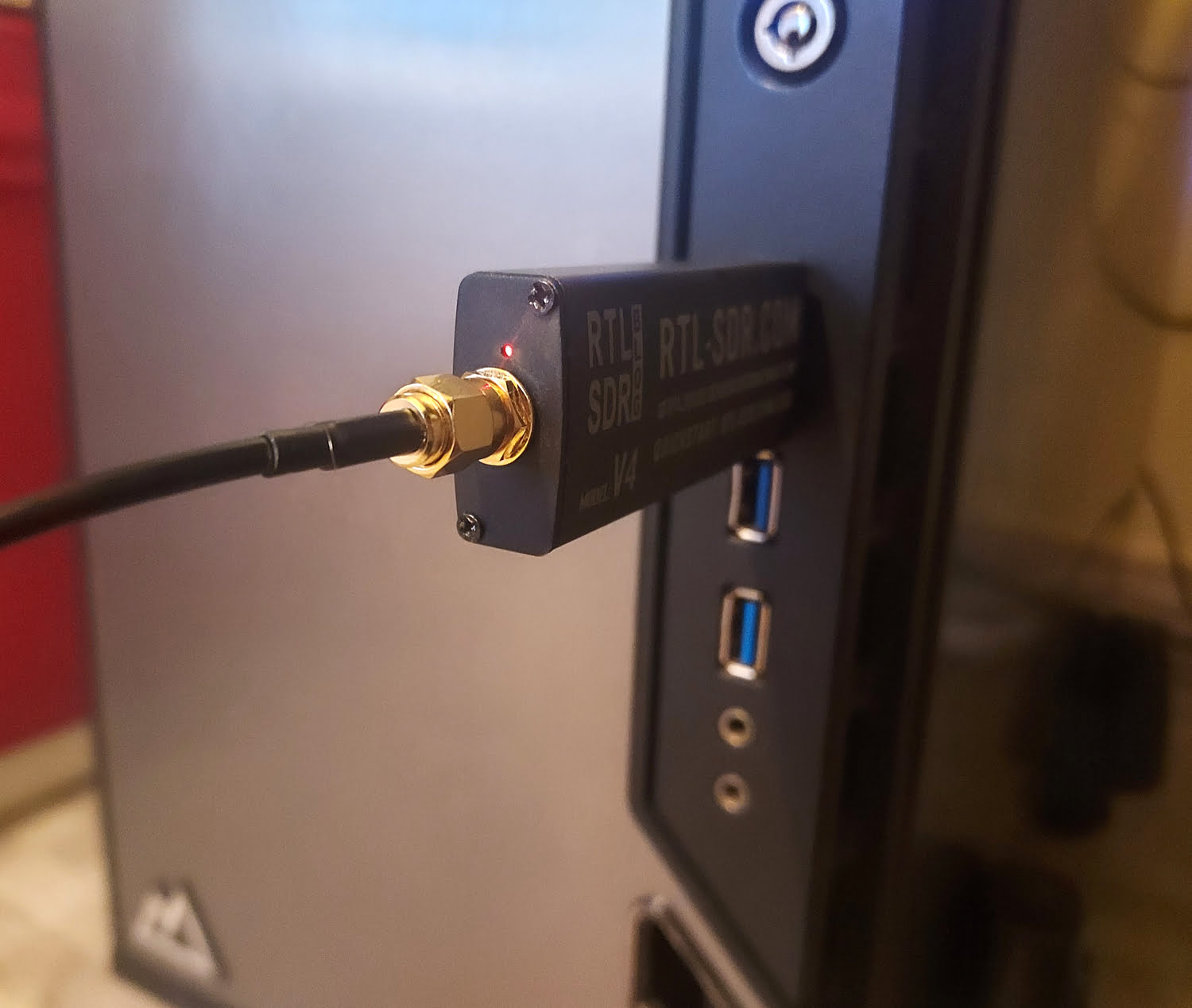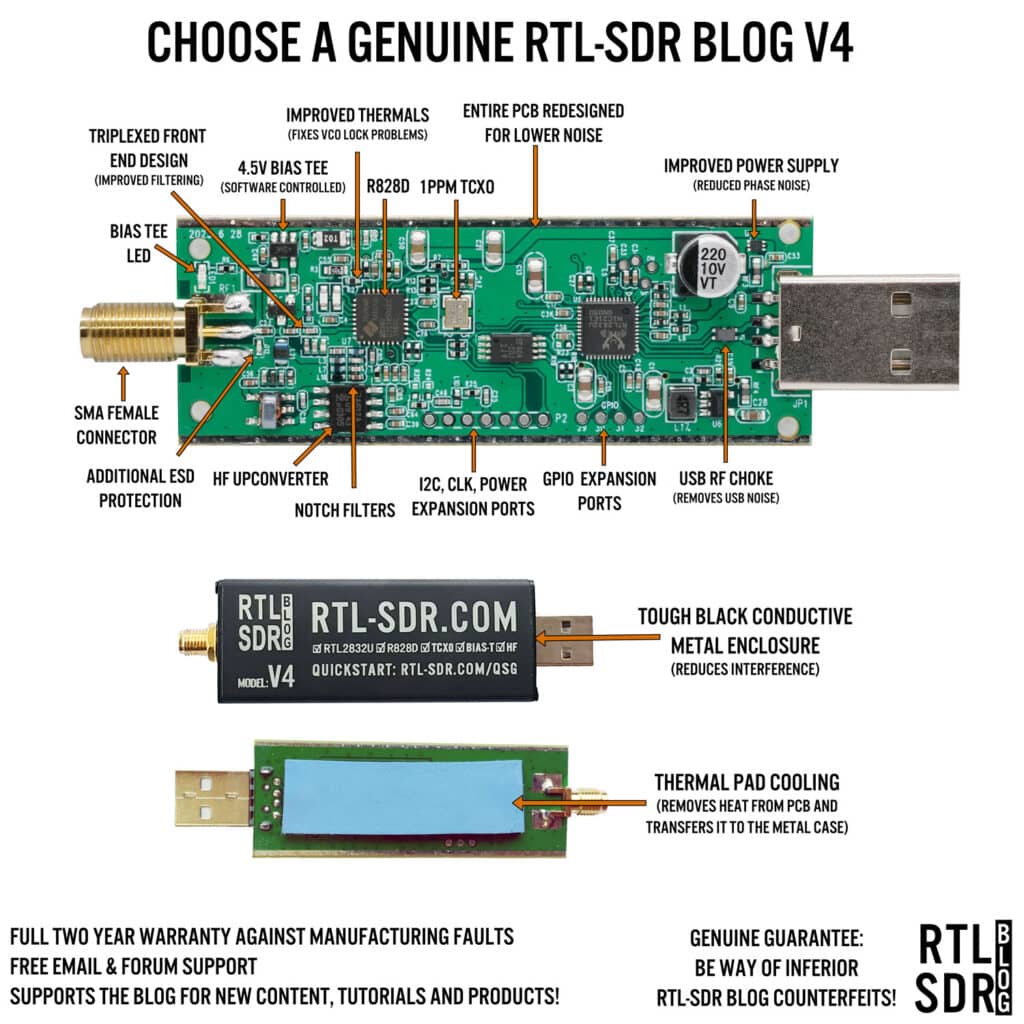
That's right, I'm going back to listening in times of social network chicken coops where nobody seems to practice it much.
And I'm back with an SDR (software defined radio) that the kings gave me and that has arrived a while ago because I missed a lot the gadgetry.
The SDR chosen was an 8-bit RTL-SDR Blog V4. It is the latest model developed by the creators of the https://www.rtl-sdr.com website. It is very cheap (about 30 euros) and for its features and performance is the best you can find as an entry-level device to get started in the fiddling if you do not have much in your pocket and / or just want to find out exactly what this is before making the leap to a better quality SDR (All of them from about 150 euros to more than 1500).
Origin
There is nothing new here. These things have been with us for over three decades. The origins of RTL-SDR go back to mass-produced DVB-T TV tuner dongles based on the RTL2832U chipset developed by Realtek.
In 2008, Eric Fry released the first software for using this chip in SDR applications, and since then, the ham radio community and hobbyists have continued to improve the software and hardware required for the RTL2832U chip to work in a number of SDR applications.
Between Antti Palosaari, Eric Fry and Osmocom (in particular Steve Markgraf) they discovered that the raw I/Q data of the RTL2832U chipset could be accessed directly, allowing the DVB-T TV tuner to be converted into a wideband software defined radio via a custom software driver developed by Steve Markgraf.
No single person or company owns the RTL-SDR name and its software and hardware in its entirety. Osmocom was the community that developed the first RTL-SDR driver that was released as open source.
Since then RTL-SDR has become an evolving phenomenon based on contributions from the community behind all open source software. Certain manufacturers market different RTL-SDR dongles to which they add a model name.

RTL-SDR Blog V4 with the power LED indicating that the software-controlled 4.5V Bias Tee is on
In order not to write a long-winded rant, in this first entry I'll just review this "Blog V4", which is sold with two options: just the dongle and a package with a modest kit consisting of a dipole and some accessories.
Beware of clones
Many clones of this popular model have been produced. Most of them are very poor, although they can still look good because the replicas are becoming more and more accurate (only aesthetically). All these clones usually mount cheap or bad components on poor materials. This results in a very bad experience, such as shifted frequencies, excessive noise and general poor performance and/or overheating because, to make it cheaper, they are poorly cooled and don't even include a sad thermal pad (as in the case of the original V4).

If you don't want to fall into the clone trap, make sure you buy it from the official RTL-SDR Blog shops. In this image, the brand provides identification of some of the clones and details of the components that are not used and other differences.

Originals can be found at different prices. On Ebay (~30 dollars), Aliexpress, Astroradio (Spain) and Amazon. List of official shops.
Today I am only writing this as an impromptu unboxing and in the following posts I will review its installation, set up, use and tinkering and my experience with some of the software that can be used to tune the ear in the radio spectrum and I will also review what will be the antenna of choice when I have it ready.
I opted for the kit knowing that the supplied antenna is very minimal, but as there is some fiddling to be done to mount the replacement so in the meantime I could try the thing out to get used to it.
Discover the kit in page 2






